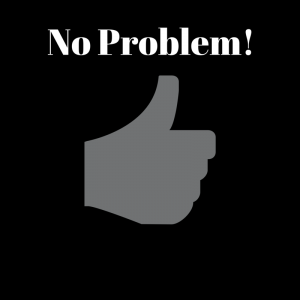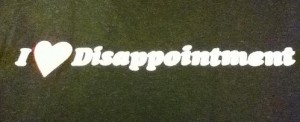Mamata making soap
My wife Suzanne and I recently spent a week with a group of Hunger Project investors attending celebration ceremonies for 3 epicenters that have achieved the exciting accomplishment of being declared "self-reliant," meaning communities that have demonstrated the confidence, capacity and skills to act as agents of their own development based on 53 distinct, rigorous measures. All told, nearly 42,000 people living in the 47 communities that make up the 3 epicenters have graduated to self-reliance in Ghana. Between 40-90% of the community members participate in one or more of the programs during the Epicenter Strategy journey which empowers community partners to go from a state of despair and resignation to self-reliance in on average, about 8 years.
During these celebrations, Mamata, a young village mother of 4 children who participates in The Hunger Project's Atuobikrom Epicenter in Ghana, Africa stated one of the most impactful leadership insights I've heard in a very long time.
When we arrived at her home, she was busy making soap outside in the yard. She never slowed her work down as we gathered around her and asked her questions about her life. She shared her very heartfelt thoughts with us as we probed for details about her family, the economics of her business, and how it all relates, (or doesn't), to the work of The Hunger Project.
Intervention
She shared a number of fascinating insights and her response to the last question was the capstone! "From your own experience as part of the epicenter, what would you like the women of the world to know?" Without hesitation, she replied, "be interested in intervention." Based on her earlier comments, she clearly was not talking about intervening in other people's lives. She meant intervention in your own life.
An example of what she was talking about was her “before and after” participation in The Hunger Project questions about her vision. She said she had no vision before being part of the program. Now she is building her soap-making business and has become involved in farming with her husband. She will put all her kids through school instead of having them work in the home and farm and she knows the importance of the kids getting an education. With support, she intervened in her own life and now her future has a completely different trajectory.
Her intervention quote was particularly relevant to me as I had just recently had a conversation with a rising star woman leader who shared her frustration with what seems to her an obsession with training in her organization and all the consultants pushing training, none of which seemed to her to be making much difference. We had contrasted the desire for information and intellectual understanding with development, which requires rigorous and sometimes painful examination of your own self-image and world view, and, more often than not, having to give up precious notions from your past. The payoff is that it will provide you with new openings and unexpected opportunities.
Mamata experienced The Hunger Project’s Vision, Commitment, and Action Program, along with several thousand of her neighbor's in the 11 villages that make up the epicenter. She has used that work to re-invent her life and create new possibilities for herself, her family, and the community.
If you became interested in intervention in your own life, what would be possible? What could it mean? What might be the unexpected outcomes? What if you could do it at the “collective level” of your organization as Mamata experienced within her Epicenter?




 To move into a New Year powerfully and to create the results you want there are some key steps to take. The first is creating an “elegant ending” to the past. Last week we posted about “
To move into a New Year powerfully and to create the results you want there are some key steps to take. The first is creating an “elegant ending” to the past. Last week we posted about “ It’s the time of year when many of us conduct annual rituals that may include everything from strategic planning sessions for business to making New Year’s resolutions or setting Bold Goals for 2016 and beyond. We’ve found any such process to be much harder to do when we haven’t completed and let go of the past. It’s very difficult, (impossible?), to really move forward when we are carting the past along with us. The process of letting go can include changing your attitude and perceptions about what the economy did to you, to digging very deep and letting go of some of the childhood stuff that shapes your life.
On the fun end of the spectrum, we have for many years put flip chart paper all over our walls when we have a New Year’s Eve party with a simple question on each, such as “What did I start and not complete?” or “What did I accomplish that I haven’t been acknowledged for?” or “What did I screw up that I didn’t get caught for?” Guests write on the charts all evening with colored markers and sometimes get even more creative with a touch of artistic display as well. On a number of occasions, we have taken them all down at midnight and symbolically burned them.
It’s the time of year when many of us conduct annual rituals that may include everything from strategic planning sessions for business to making New Year’s resolutions or setting Bold Goals for 2016 and beyond. We’ve found any such process to be much harder to do when we haven’t completed and let go of the past. It’s very difficult, (impossible?), to really move forward when we are carting the past along with us. The process of letting go can include changing your attitude and perceptions about what the economy did to you, to digging very deep and letting go of some of the childhood stuff that shapes your life.
On the fun end of the spectrum, we have for many years put flip chart paper all over our walls when we have a New Year’s Eve party with a simple question on each, such as “What did I start and not complete?” or “What did I accomplish that I haven’t been acknowledged for?” or “What did I screw up that I didn’t get caught for?” Guests write on the charts all evening with colored markers and sometimes get even more creative with a touch of artistic display as well. On a number of occasions, we have taken them all down at midnight and symbolically burned them. We all have ways of describing our businesses. It usually involves a description of our services and products, and how they are delivered summarized in a snappy “elevator speech.” But these finely crafted and well-rehearsed statements are often a “red herring” in many ways and we get caught up in details instead of seeing the true bottom line of what we do.
I was reminded of this when I read Google’s announcement of the formation of a new umbrella parent company called, “Alphabet.” What struck me was the line from one of the founders stating, “Sergey and I are seriously in the business of starting new things.” This is the bottom line of what Google’s founders have to say about what business they are in. They start new things. Tony Hsieh made a similar statement several years ago about Zappo’s, (and I am paraphrasing), “we are a customer service company.” It seems to me to be particularly powerful and important to see your business in such a deceptively simple way and also to be able to articulate it so clearly.
We all have ways of describing our businesses. It usually involves a description of our services and products, and how they are delivered summarized in a snappy “elevator speech.” But these finely crafted and well-rehearsed statements are often a “red herring” in many ways and we get caught up in details instead of seeing the true bottom line of what we do.
I was reminded of this when I read Google’s announcement of the formation of a new umbrella parent company called, “Alphabet.” What struck me was the line from one of the founders stating, “Sergey and I are seriously in the business of starting new things.” This is the bottom line of what Google’s founders have to say about what business they are in. They start new things. Tony Hsieh made a similar statement several years ago about Zappo’s, (and I am paraphrasing), “we are a customer service company.” It seems to me to be particularly powerful and important to see your business in such a deceptively simple way and also to be able to articulate it so clearly. It happens instantly, automatically, and from an unexamined place in your mind. It shows up in a sudden shift from open, happy, creative, and conversational to defensive, and, depending on your typical reaction, engaged in some form of fight, flight, freeze, or appease. I have heard it called by a number of terms. For me, nothing says it more directly than the “kill switch” that instantly cuts off your aliveness and puts you into survival behavior.
Apparently all human beings have a kill switch. It gets set off by all kinds of circumstances and interactions. The common thread is an unwitting reminder of what you believe to be wrong with you. It not only reminds you, the "incoming" matches the story you have been telling yourself most all of your life and serves to confirm your limiting belief. At the level of your limbic system (old brain), it occurs as a threat to your survival. Since the limbic system can't tell the difference between a physical threat and a threat in language, the event has the same impact on your body chemistry and aliveness.
It happens instantly, automatically, and from an unexamined place in your mind. It shows up in a sudden shift from open, happy, creative, and conversational to defensive, and, depending on your typical reaction, engaged in some form of fight, flight, freeze, or appease. I have heard it called by a number of terms. For me, nothing says it more directly than the “kill switch” that instantly cuts off your aliveness and puts you into survival behavior.
Apparently all human beings have a kill switch. It gets set off by all kinds of circumstances and interactions. The common thread is an unwitting reminder of what you believe to be wrong with you. It not only reminds you, the "incoming" matches the story you have been telling yourself most all of your life and serves to confirm your limiting belief. At the level of your limbic system (old brain), it occurs as a threat to your survival. Since the limbic system can't tell the difference between a physical threat and a threat in language, the event has the same impact on your body chemistry and aliveness. There is a paradox about leadership regarding your customers and potential customers and here it is. The longer you are a leader in your business and industry the more of an expert you will be seen to be. Simultaneously, you may also completely lose touch with what it is to be a new customer to your product or service, what those potential customers are really wanting to buy, and how your customer service occurs for both your existing and potential customers. It doesn’t take long to be immersed in your own marketing and sales belief system and lose touch with the expertise that allowed your original success. If you succumb to this very normal pattern, you will lose insight into something critical to your success and sustainability and you will become an expert/non-expert. This is the “ivory tower of leadership,” or at least one of them. You will have hard-won expertise in knowing your product or service, your competitors, and your existing customers, but you will likely lose understanding critical desires and behaviors about those who are not buying from you - your potential new customers.
A great example of this occurs in my industry. Within the industry, people talk about “peer advisory.” Do you think there is a potential customer out there who has ever heard of “peer advisory” or has a clue what that means? I can say fairly definitely that the answer is “no” unless they have been approached by someone in the industry who explained it to them. It’s important that those in my industry understand how people who need these services talk about it, not how we inside the industry talk about it.
There is a paradox about leadership regarding your customers and potential customers and here it is. The longer you are a leader in your business and industry the more of an expert you will be seen to be. Simultaneously, you may also completely lose touch with what it is to be a new customer to your product or service, what those potential customers are really wanting to buy, and how your customer service occurs for both your existing and potential customers. It doesn’t take long to be immersed in your own marketing and sales belief system and lose touch with the expertise that allowed your original success. If you succumb to this very normal pattern, you will lose insight into something critical to your success and sustainability and you will become an expert/non-expert. This is the “ivory tower of leadership,” or at least one of them. You will have hard-won expertise in knowing your product or service, your competitors, and your existing customers, but you will likely lose understanding critical desires and behaviors about those who are not buying from you - your potential new customers.
A great example of this occurs in my industry. Within the industry, people talk about “peer advisory.” Do you think there is a potential customer out there who has ever heard of “peer advisory” or has a clue what that means? I can say fairly definitely that the answer is “no” unless they have been approached by someone in the industry who explained it to them. It’s important that those in my industry understand how people who need these services talk about it, not how we inside the industry talk about it. l business leader, you are probably smart, have a strong point-of-view on most things, and you communicate in a way that has others follow you. Whether realized or not, you may expect yourself to have an opinion on most all of the issues that arise in your organization and you likely believe that your responses are correct. In fact, you may not even recognize them as your beliefs or as your own point-of-view. Maybe it's just "reality," after all, you have been successful, right?
Also as a successful leader, you have hired team members that you believe are intelligent, qualified and talented people. You have also hired vendors and outside partners that you also believe are talented, intelligent and reliable. So, the question is "how well and how often do you actually listen to these people?"
l business leader, you are probably smart, have a strong point-of-view on most things, and you communicate in a way that has others follow you. Whether realized or not, you may expect yourself to have an opinion on most all of the issues that arise in your organization and you likely believe that your responses are correct. In fact, you may not even recognize them as your beliefs or as your own point-of-view. Maybe it's just "reality," after all, you have been successful, right?
Also as a successful leader, you have hired team members that you believe are intelligent, qualified and talented people. You have also hired vendors and outside partners that you also believe are talented, intelligent and reliable. So, the question is "how well and how often do you actually listen to these people?" Recently I have noticed a trend in business communication. It’s the automatic response of, “no problem.” I have heard it from customer service agents, business bankers, computer/IT people and more. It happens in response to inquiries, questions, issues and just about any topic where one needs to communicate with someone else for mutual understanding. It seems to be the widespread and currently fashionable answer to provide to customers, clients, and colleagues.
While intended to make someone feel soothed and assured that whatever is going on is “under control” and will be addressed, corrected, etc. I find myself having the opposite reaction. I have noticed I often feel “cut off” in these conversations with the “no problem,” before I have even expressed what I have to say. I also notice that the “no problem” is usually repeated multiple times in rapid succession and seems to be a quick offensive to deflect whatever I might be about to say next. This only increases my annoyance.
Recently I have noticed a trend in business communication. It’s the automatic response of, “no problem.” I have heard it from customer service agents, business bankers, computer/IT people and more. It happens in response to inquiries, questions, issues and just about any topic where one needs to communicate with someone else for mutual understanding. It seems to be the widespread and currently fashionable answer to provide to customers, clients, and colleagues.
While intended to make someone feel soothed and assured that whatever is going on is “under control” and will be addressed, corrected, etc. I find myself having the opposite reaction. I have noticed I often feel “cut off” in these conversations with the “no problem,” before I have even expressed what I have to say. I also notice that the “no problem” is usually repeated multiple times in rapid succession and seems to be a quick offensive to deflect whatever I might be about to say next. This only increases my annoyance. Do you ever wish you could just be you, be yourself? Do you also struggle for balance in your life? One of my fellow Vistage Chairs recently used the term "relief from posing" in a conversation about one of the benefits members of Vistage Groups experience. I was immediately struck by how she captured an observation I have made about
Do you ever wish you could just be you, be yourself? Do you also struggle for balance in your life? One of my fellow Vistage Chairs recently used the term "relief from posing" in a conversation about one of the benefits members of Vistage Groups experience. I was immediately struck by how she captured an observation I have made about  The Seahawks’ season was tough. During the first half, things did not go well for a variety of reasons. The team pulled it together and the second half of the season was very strong. During the NFC Conference Championship the rubber met the road. Although they won, it wasn’t pretty and serious injuries occurred. In the Super Bowl, despite nearly winning, they suffered a painful loss in the final minutes of the game.
Although they lost, they are the first team in years with back-to-back Super Bowl appearances and overall they had an amazing season. They are also leading an utterly devoted legion of fans, the 12s, or “Seahawk Nation,” who did not turn on them because of their loss. Instead they have strongly embraced them. Clearly something special is going on here, particularly with the leadership of the Seahawks. Here are just some of the key lessons I see that you, and really all business leaders, could benefit from:
The Seahawks’ season was tough. During the first half, things did not go well for a variety of reasons. The team pulled it together and the second half of the season was very strong. During the NFC Conference Championship the rubber met the road. Although they won, it wasn’t pretty and serious injuries occurred. In the Super Bowl, despite nearly winning, they suffered a painful loss in the final minutes of the game.
Although they lost, they are the first team in years with back-to-back Super Bowl appearances and overall they had an amazing season. They are also leading an utterly devoted legion of fans, the 12s, or “Seahawk Nation,” who did not turn on them because of their loss. Instead they have strongly embraced them. Clearly something special is going on here, particularly with the leadership of the Seahawks. Here are just some of the key lessons I see that you, and really all business leaders, could benefit from: Recently I noticed two key themes that together have important applications to business leadership. The first was the Seattle Seahawks Coach, Pete Carroll's admonition to his team all season, "It doesn't matter how you start. It's how you finish!" The powerful demonstration of the value of his challenge was displayed in the NFL Championship game where his team came from a 16 point deficit in the last two minutes to a win and thereby qualify for the Super Bowl.
The second was a mantra repeated by Navy Seal Chris Kyle in the movie American Sniper, "Aim small to hit small." The clarity this provided him allowed him to become the most successful sniper in American history. Without engaging in an argument about his role and job, let's ask how does this mantra translate to business? Focus narrowly to get specific desired results.
Recently I noticed two key themes that together have important applications to business leadership. The first was the Seattle Seahawks Coach, Pete Carroll's admonition to his team all season, "It doesn't matter how you start. It's how you finish!" The powerful demonstration of the value of his challenge was displayed in the NFL Championship game where his team came from a 16 point deficit in the last two minutes to a win and thereby qualify for the Super Bowl.
The second was a mantra repeated by Navy Seal Chris Kyle in the movie American Sniper, "Aim small to hit small." The clarity this provided him allowed him to become the most successful sniper in American history. Without engaging in an argument about his role and job, let's ask how does this mantra translate to business? Focus narrowly to get specific desired results. Recently, I have encountered a number of executives who are working extremely hard, yet seem listless, and lacking passion. When I investigate, I find they are allowing themselves to be defined by their task agendas. They grin when I ask them if they've lost their mojo, but it is the grin of someone who just got caught in a little white lie rather than a grin of joy.
The conversation immediately turns to "shoulds", "oughtas," and "need tos." Highest on that list are things like get more sleep, eat better, cut down on the wine, and exercise more, none of which are likely to happen given their mental state. The lack of changed behavior gets blamed on the holidays, quickly followed by "I'll get right on it after the first of the year,” yet not much has changed.
Recently, I have encountered a number of executives who are working extremely hard, yet seem listless, and lacking passion. When I investigate, I find they are allowing themselves to be defined by their task agendas. They grin when I ask them if they've lost their mojo, but it is the grin of someone who just got caught in a little white lie rather than a grin of joy.
The conversation immediately turns to "shoulds", "oughtas," and "need tos." Highest on that list are things like get more sleep, eat better, cut down on the wine, and exercise more, none of which are likely to happen given their mental state. The lack of changed behavior gets blamed on the holidays, quickly followed by "I'll get right on it after the first of the year,” yet not much has changed. To move into a New Year powerfully and to create the results you want there are some key steps to take. The first is creating an “elegant ending” to the past. Last week we posted about “
To move into a New Year powerfully and to create the results you want there are some key steps to take. The first is creating an “elegant ending” to the past. Last week we posted about “ It’s the time of year when many of us conduct annual rituals that may include everything from strategic planning sessions for business to making New Year’s resolutions or setting Bold Goals for 2015 and beyond. We’ve found any such process to be much harder to do when we haven’t completed and let go of the past. It’s very difficult, (impossible?), to really move forward when we are carting the past along with us. The process of letting go can include changing your attitude and perceptions about what the economy did to you, to digging very deep and letting go of some of the childhood stuff that shapes your life.
On the fun end of the spectrum, we have for many years put flip chart paper all over our walls when we have a New Year’s Eve party with a simple question on each, such as “What did I start and not complete?” or “What did I accomplish that I haven’t been acknowledged for?” or “What did I screw up that I didn’t get caught for?” Guests write on the charts all evening with colored markers and sometimes get even more creative with a touch of artistic display as well. On a number of occasions we have taken them all down at midnight and symbolically burned them.
It’s the time of year when many of us conduct annual rituals that may include everything from strategic planning sessions for business to making New Year’s resolutions or setting Bold Goals for 2015 and beyond. We’ve found any such process to be much harder to do when we haven’t completed and let go of the past. It’s very difficult, (impossible?), to really move forward when we are carting the past along with us. The process of letting go can include changing your attitude and perceptions about what the economy did to you, to digging very deep and letting go of some of the childhood stuff that shapes your life.
On the fun end of the spectrum, we have for many years put flip chart paper all over our walls when we have a New Year’s Eve party with a simple question on each, such as “What did I start and not complete?” or “What did I accomplish that I haven’t been acknowledged for?” or “What did I screw up that I didn’t get caught for?” Guests write on the charts all evening with colored markers and sometimes get even more creative with a touch of artistic display as well. On a number of occasions we have taken them all down at midnight and symbolically burned them. oving results-focused business world of communication that is sometimes reduced to 140 characters or less, it is far too easy to go for days, weeks, months or in some cases years, without pausing to notice and recognize all there is to appreciate.
From a leadership perspective it is easy to confuse social platitudes with what I'm calling “Authentic Appreciation.” For example, "Good job, Jane, you got that report out in record time," is fine and important feedback that recognizes and rewards performance. What it quite possibly overlooks is where Jane was coming from about doing the report, what sacrifices she may have made, the other team members she had to enroll to get the information she needed and a variety of other, human dimension aspects of Jane that she brought to her work.
oving results-focused business world of communication that is sometimes reduced to 140 characters or less, it is far too easy to go for days, weeks, months or in some cases years, without pausing to notice and recognize all there is to appreciate.
From a leadership perspective it is easy to confuse social platitudes with what I'm calling “Authentic Appreciation.” For example, "Good job, Jane, you got that report out in record time," is fine and important feedback that recognizes and rewards performance. What it quite possibly overlooks is where Jane was coming from about doing the report, what sacrifices she may have made, the other team members she had to enroll to get the information she needed and a variety of other, human dimension aspects of Jane that she brought to her work. Disappointment can actually be a powerful tool. Whether you are disappointed in yourself, someone else, or in an outcome, investigating it more deeply can actually provide a powerful access to increasing your effectiveness and producing outcomes you might have thought were no longer possible.
Webster’s defines disappointment as “the feeling of sadness or displeasure caused by the nonfulfillment of one's hopes or expectations.” I have also heard it defined as “politically correct anger” which suggests a higher degree of intensity to the experience. In any case it is an emotional response that can shape your thoughts and behavior in unproductive ways. Viewing disappointment as a diagnostic offers a different perspective, and perhaps a different way to deal with it.
Disappointment can actually be a powerful tool. Whether you are disappointed in yourself, someone else, or in an outcome, investigating it more deeply can actually provide a powerful access to increasing your effectiveness and producing outcomes you might have thought were no longer possible.
Webster’s defines disappointment as “the feeling of sadness or displeasure caused by the nonfulfillment of one's hopes or expectations.” I have also heard it defined as “politically correct anger” which suggests a higher degree of intensity to the experience. In any case it is an emotional response that can shape your thoughts and behavior in unproductive ways. Viewing disappointment as a diagnostic offers a different perspective, and perhaps a different way to deal with it. Currently within our culture fear seems to be running rampant. Unfortunately, most of it seems to be some variation or another of the bogeyman. Fear can be empowering or debilitating to a leader. It can render you helpless to act, or worse, cause you to take really stupid actions that actually damage your situation instead of protecting you.
Substantiated fear, for example when your reptilian brain has you jump back immediately at the sight of a snake, can be very healthy. Rational fear expressed as heightened awareness based on facts showing that you are facing threats, can focus your attention, accelerate your pace, increase your team's sense of connection, and increase your odds of successfully overcoming the challenge.
Currently within our culture fear seems to be running rampant. Unfortunately, most of it seems to be some variation or another of the bogeyman. Fear can be empowering or debilitating to a leader. It can render you helpless to act, or worse, cause you to take really stupid actions that actually damage your situation instead of protecting you.
Substantiated fear, for example when your reptilian brain has you jump back immediately at the sight of a snake, can be very healthy. Rational fear expressed as heightened awareness based on facts showing that you are facing threats, can focus your attention, accelerate your pace, increase your team's sense of connection, and increase your odds of successfully overcoming the challenge. “…busy…That’s the armor everyone put on to pretend they had a purpose in the world.” -From the poem Red Brocade by Naomi Shihab Nye as quoted in the Sept./Oct. ’14 issue of Spirituality & Health
I don’t know about you, but that line landed dead center for me. I have been noticing the ever accelerating “busyness” in our clients’ lives and our own. Just because we can move faster and do more things today doesn’t mean we should or that it is good for us, those around us, or life on the planet!
“…busy…That’s the armor everyone put on to pretend they had a purpose in the world.” -From the poem Red Brocade by Naomi Shihab Nye as quoted in the Sept./Oct. ’14 issue of Spirituality & Health
I don’t know about you, but that line landed dead center for me. I have been noticing the ever accelerating “busyness” in our clients’ lives and our own. Just because we can move faster and do more things today doesn’t mean we should or that it is good for us, those around us, or life on the planet!